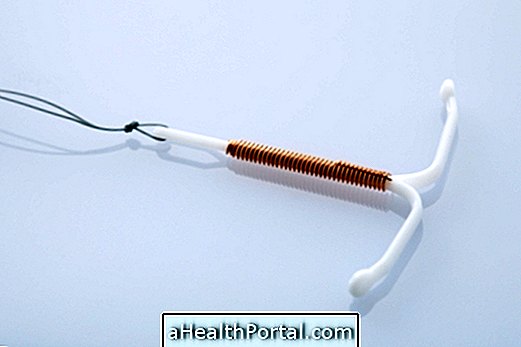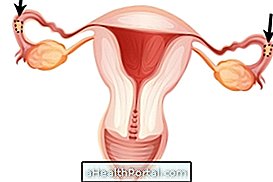The Intra-Uterine Device, popularly known as the IUD, is a contraceptive method made of flexible molded T-shaped plastic that is introduced into the uterus to prevent pregnancy. It can only be placed and removed by the gynecologist, and although it can begin to use at any point in the menstrual cycle, it should preferably be placed in the first 12 days of the cycle.
The IUD has an efficacy equal to or greater than 99% and may remain in the uterus for 5 to 10 years and should be withdrawn up to one year after the last menstruation at menopause. There are two main types of IUDs:
- Copper IUD or Multiload IUD: is made of plastic, but coated only with copper or with copper and silver;
- Hormone IUD or Mirena IUD: Contains a hormone, levonorgestrel, which is being released into the uterus after its insertion. Learn all about this device in 10 Common Questions About Mirena.
Since the copper IUD does not involve the use of hormones, it usually has fewer side effects on the rest of the body, such as mood, weight or decreased libido changes and can be used at any age, not interfering with breastfeeding.

However, the hormonal or myrene IUD also has several advantages, contributing to the reduction of the risk of endometrial cancer, reduction of menstrual flow and relief of menstrual cramps. Thus, this type is also widely used in women who do not need contraception, but who are doing the treatment of endometriosis or fibroids, for example.
Advantages and disadvantages of the IUD
| Benefits | Disadvantages |
| It is a practical and long-lasting method | The onset of anemia due to the longer and more abundant menses that the copper IUD can cause |
| There is no forgetting | Risk of infection of the uterus |
| Does not interfere with intimate contact | If a sexually transmitted infection occurs, it is more likely to develop into a more serious disease, pelvic inflammatory disease |
| Fertility returns to normal after withdrawal | Increased risk of ectopic pregnancy |
Depending on the type, the IUD may have other advantages and disadvantages for each woman, and it is recommended to discuss this information with your gynecologist when choosing the best contraceptive method.
Know other contraceptive methods and what their advantages and disadvantages.
IUD price
The IUD can be bought at any pharmacy and the price can reach up to 1000 reais. The price of your placement can be up to $ 600, depending on the doctor.
How the IUD Works
The copper IUD works by preventing the egg from attaching itself to the uterus and decreasing the effectiveness of sperm through the action of copper, disrupting fertilization. This type of IUD provides protection over a period of approximately 10 years.
The hormonal IUD, by the action of the hormone, hinders ovulation and prevents the egg from attaching itself to the uterus, thickening the mucus of the cervix so as to form a kind of tampon that prevents the spermatozoa from reaching there, thus avoiding fertilization . This type of IUD provides protection for up to 5 years.
Possible side effects
Some of the side effects of this contraceptive method include:
- Uterine pains or contractions, more frequent in women who have never had children;
- Small hemorrhage shortly after IUD placement;
- Fainting;
- Vaginal discharge.
The copper IUD may also lead to longer, more bleeding and more painful menses, only in some women, especially in the first few months after insertion of the IUD.
The hormonal IUD, in addition to these side effects can also cause reduced menstrual flow or absence of menstruation or small menstrual blood outlets, called spotting, pimples, headaches, pain and tenderness of the breast, fluid retention, ovarian cysts and weight gain .
























